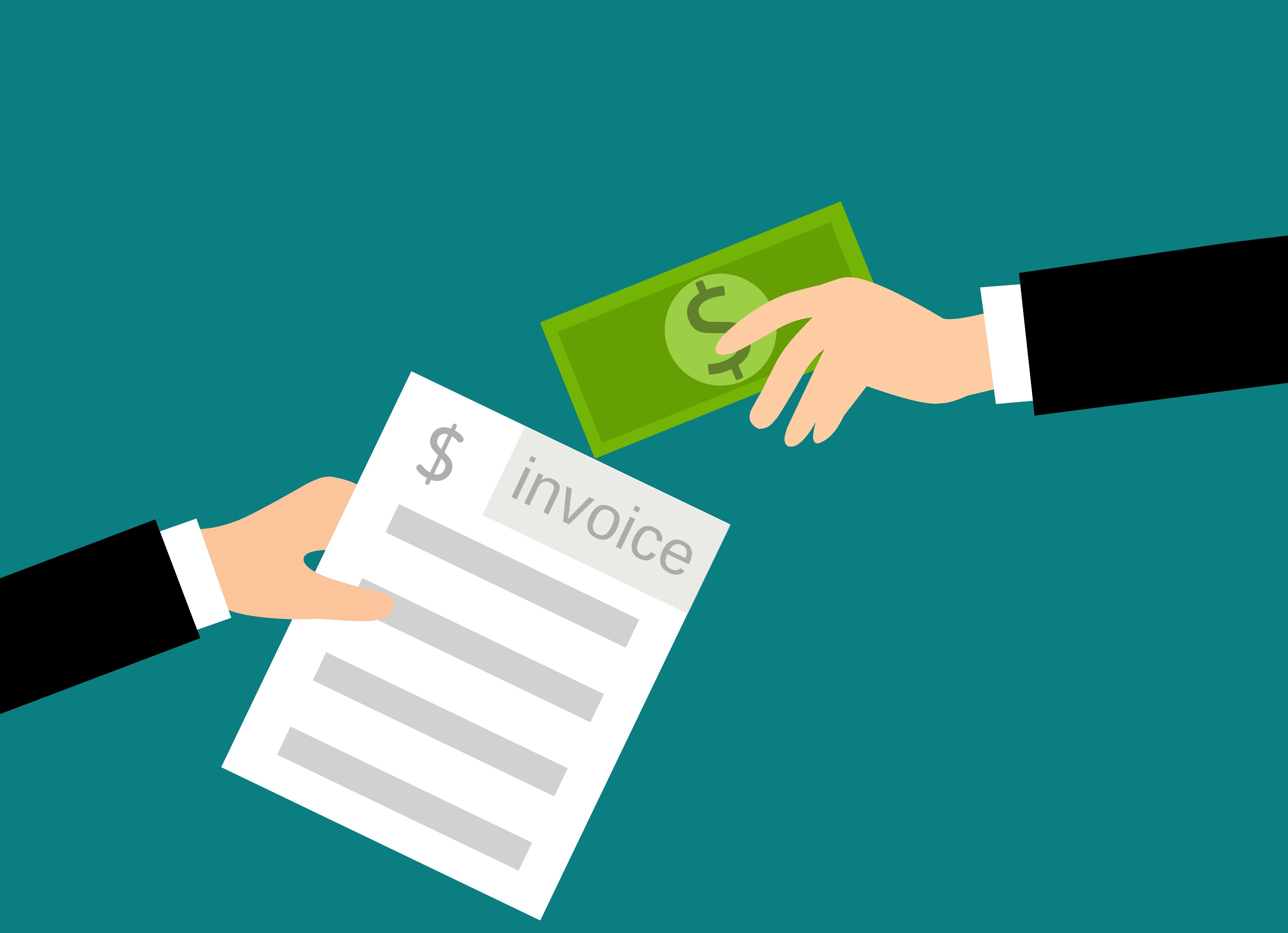Pro Forma Invoices: A Complete Guide for Businesses
The proforma invoice is based on the idea that sending a document related to the sale of a product or service to the buyer prior to the sale can avoid unnecessary complications. Fewer complications equal less of a chance of losing money. In this article, we explain what a pro-forma invoice is, what the important elements are (such as the obligatory invoice number), how to create one, and discuss how it differs from other financial documents.

What is a Proforma Invoice?
In layman terms, a proforma invoice is a document between the buyer and the seller that includes goods or services yet to be delivered, along with other critical info such as shipping fees and delivery information. The important thing to remember is that the buyer gets the proforma invoice before obtaining the product or service.
A better way to manage your finances
With Hiveage you can send elegant invoices to your customers, accept online payments, and manage your team — all in one place.
Now that you know the definition of a proforma invoice, let’s discuss its purpose.
Pro Forma or Proforma?
A proforma invoice is sometimes listed as a pro forma invoice. The answer to “what is a proforma invoice” is the same as “what is a pro forma invoice.” You see it listed one way or another, and sometimes even as pro-forma, but they all mean the same thing.
What is the Purpose of a Proforma Invoice?
Consider the following requirements:
- Does the buyer need to know the value of what they’re buying?
- Should the buyer know what to expect when buying from a seller? (i.e., is there good faith?)
- Should the sales process be smooth?
- Do you need a legally binding document for the terms and conditions of the sale?
If you thought “yes” to most or all of the above, then a proforma invoice might be useful to you!
How to Create a Proforma Invoice
Need to make an invoice? Proforma invoices are not very complicated, but it’s helpful to have a proforma invoice template at hand when creating one. You can use our free invoice templates or the free invoice generator for this purpose.
As it is legally binding in some parts of the world, you should create an accurate and valid invoice. A proforma invoice should contain the following information:
- Customer information (name, address, etc.)
- Your business information (Name, Address, etc.)
- Terms of sale
- The goods being sold plus the individual prices
- Applicable taxes, discounts and shipping fees
- Total price
- Invoice number
- Shipping dates and due dates
- Other miscellaneous info required
In due time, you can eventually turn your pro forma invoice into a commercial invoice. If the customer accepts your pro forma invoice, then Hiveage can turn it into a useful commercial invoice.
What Information is Required on a Proforma Invoice?
All goods or services must have some terms involved in their sale. For good faith, you should include the contact details of both parties and the aforementioned details. It’s critical to include any information that helps the buyer understand what they’re getting.
Whether it’s a pro forma invoice or commercial invoice, the legal document must be accurate for the goods involved. If any essential information is left off of the paperwork, that could bring upon unnecessary legal trouble. Just to reiterate:
- Price of the products
- Descriptions of said products
- Shipping and delivery dates
- Contact details
- Total due
The above are among the most vital data to include in a pro forma invoice, so don’t forget to include it! A true invoice should aspire to be as accurate as possible to avoid potential confusion. If you’re ever unsure, you can always look up examples of pro forma invoices and see how it includes goods, terms, and whatever else you need to know.
What is the Difference Between an Invoice and a Pro forma Invoice?
Think of the standard commercial invoice (sometimes referred to as a sales invoice) as paperwork to confirm the sale of the goods and request payment of some kind. By comparison, a proforma invoice is more of a declaration of what is to come, as it is sent prior to paying for the goods—a preliminary invoice of sorts. Regular invoices also tend to be more legally binding than standard pro forma invoices.
Formatting-wise, the most important distinction between the two is that the proforma invoice must label itself as a proforma invoice. Aside from that, a commercial invoice is more tied into accounting than pro forma invoices are, as the sale itself may not have occurred with a proforma invoice.
Keep in mind that a pro forma invoice is usually done before the buyer purchases the goods or services you offer. An official invoice is created during the purchasing period. Whether you need a commercial invoice, a proforma invoice, or something else depends on the terms and conditions presented to the buyer.
Can You Receive Payment on a Pro forma Invoice?
Technically you can receive payment on a pro forma invoice, but you typically won’t until a regular invoice is set up. You should consider a pro forma invoice more akin to a notice as opposed to the actual bill. As pro forma invoices aren’t usually used in accounting, you shouldn’t expect payments on them: the clients are likely to wait for their final invoices.
Comparisons to Other Purchase Forms
While a proforma invoice is different from a regular invoice, it is essential to distinguish it from other types of purchase forms included in the sales process. Invoices are quite distinguishable from bills of sales, sales receipts, etc.
Pro forma Invoices Compared to a Sales Receipt
If the proforma invoice shows what could be purchased in the future, a sales receipt shows what has already been purchased: think of a proforma invoice as something that happens before a sales receipt is made.
Pro forma Invoices Compared to a Bill of Sale
A bill of sale transfers ownership while a proforma invoice doesn’t. A proforma invoice cannot prove any goods have been sold while a bill of sale can. On a similar note, standard invoices may be used prior to the bill of sale.
International Invoices
As there are 195 countries out there, some minor differences in laws (such as tariffs, shipping limits, etc.) can influence what you can put on the pro forma invoices. Check with the relevant officials of the countries you do business with to avoid potential confusion.
Shipping goods from one country to another may take longer than domestic trading, so be prepared for delays. As a proforma invoice is often done before an item is shipped, the delivery date could be incorrect. Nonetheless, it is still an excellent practice to partake in good faith.
Crucial Information Regarding a Proforma Invoice
Proforma invoices are not a request for payment or a demand for the delivery for goods. Instead, the proforma invoices are used in a preliminary fashion, sent to buyers before shipment or delivery. Think of it as a telling of what's to come.
There are no 100% definite guidelines to follow as far as formatting goes. There is useful data you should aspire to include, but many proforma invoices differ from one another. Remember, a proforma invoice is not a commercial invoice.
A proforma invoice should provide the buyer with enough knowledge to know what they could be getting if purchasing the goods. Keep in mind that it comes before the final invoice is delivered to the client.
Should You Send a Proforma Invoice?
Yes, you should send a proforma invoice to establish a baseline of the goods and services you offer. Your customer can see the terms you list, and possibly dispute the terms if they choose to do so. As no payment is typically made, this allows a more trusting negotiation to go underway.
In most cases you are not required to send a proforma invoice, but it’s usually a good idea to include one. If the details contained in it are what the customer has in mind, they don’t have to engage in lengthy discussions. You should use a proforma invoice whenever you can for simplifying the transaction process.
Make sure to use a proforma invoice if you do a lot of shipping and delivery. Something as simple as the customer understanding the terms of what you offer can be crucial to your business's success. Alongside proforma invoices, you should use commercial invoices to confirm transactions.
Terms of a Proforma Invoice
The terms you include in this type of invoice are similar to actual invoices. However, the buyer doesn’t necessarily have to buy what you offer when they see your proforma invoices. Ensure the description of your terms is appealing to the buyer and reasonable enough for them to consider it.
Closing Remarks About Proforma Invoices
If you have the goods and terms lined up appealingly, then your proforma invoices should be successful. Remember to include:
- Fees (item prices, discounts, taxes, shipping fees and total value)
- Dates (shipping date, delivery date)
- Description of items to be purchased
- Contact details of both the buyer and the seller
As these types of invoices don’t have a rigid format, you can be flexible with what you can include. Formatting, color schemes, and other miscellaneous factors are things you can customize in order to make your invoices stand out. If you’re in doubt, check out our invoice generator for a clean, easy-to-use template.
Armed with this knowledge of how pro forma invoices work, we hope you can establish more trust with your customers and work on growing your business!
FAQs on Proforma Invoices
What is a proforma invoice?
A pro forma invoice is a quote in an invoice format that is offered prior to the delivery of goods and services to the buyer. It helps make the sales process smoother, and acts as a legally binding agreement for the terms and conditions of the sale.
What is difference between proforma invoice and invoice?
A formal invoice is a request for payment that states the final details total amount due. A proforma invoice is a declaration by the seller to provide products and services on a specified date and time, sent prior to the actual sale.
Can payment be made on proforma invoice?
A payment cannot be made on a proforma invoice. It is generated prior to the delivery of goods and services. A sales invoice would have to be created, with payment terms and other details, to be sent to the accounts payable department of the buyer.
Join thousands of business-savvy entrepreneurs on our mailing list.
Curated emails that’ll help you manage your finances better.




